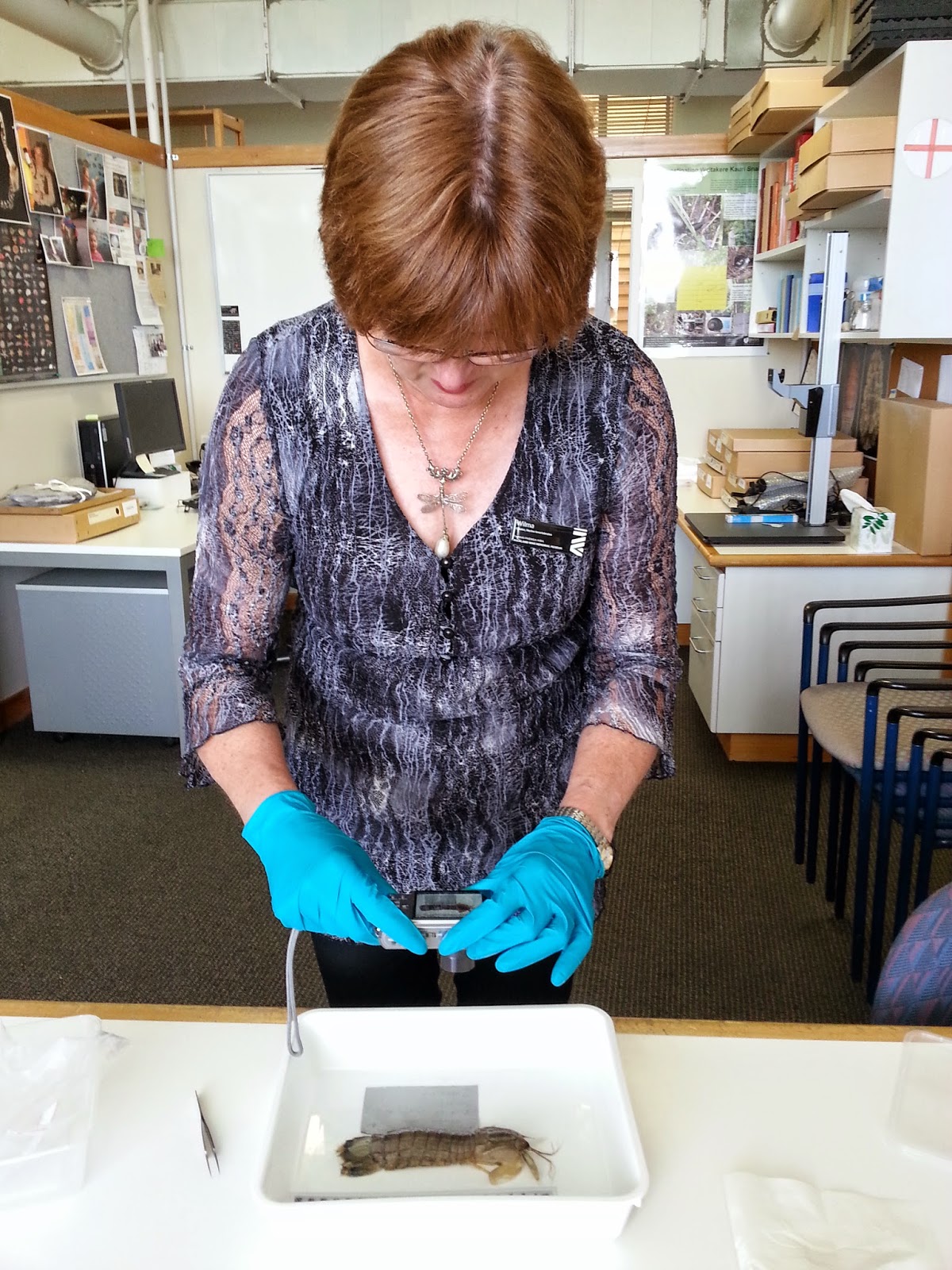Sam is a
seven year old boy who went fishing for the first time. He was on holiday in
the Kaipara, north of Auckland. To his surprise he didn’t catch a fish, but this
giant shrimp, called Japanese mantis shrimp. A shrimp is not a fish, but a crustacean.
It has a powerful spear, which it uses to hunt. You don’t want this creature
lashing out at your finger, as it could spear right through it! Can you tell from the picture how large it is?
The
Japanese mantis shrimp is an invasive species, which means it doesn’t belong in NZ, and has a negative effect on the environment. It probably arrived here
on a fishing vessel.
Sam donated
his catch to the museum, and now it has become part of the marine collection.
The lady in the picture is Wilma. She works at the museum and is a taxonomist, which means she can identify many creatures and give them the correct label. She told me the scientific name for this shrimp is Oratosquila oratorio.
Fun fact: in Japan they eat hem as sushi.


